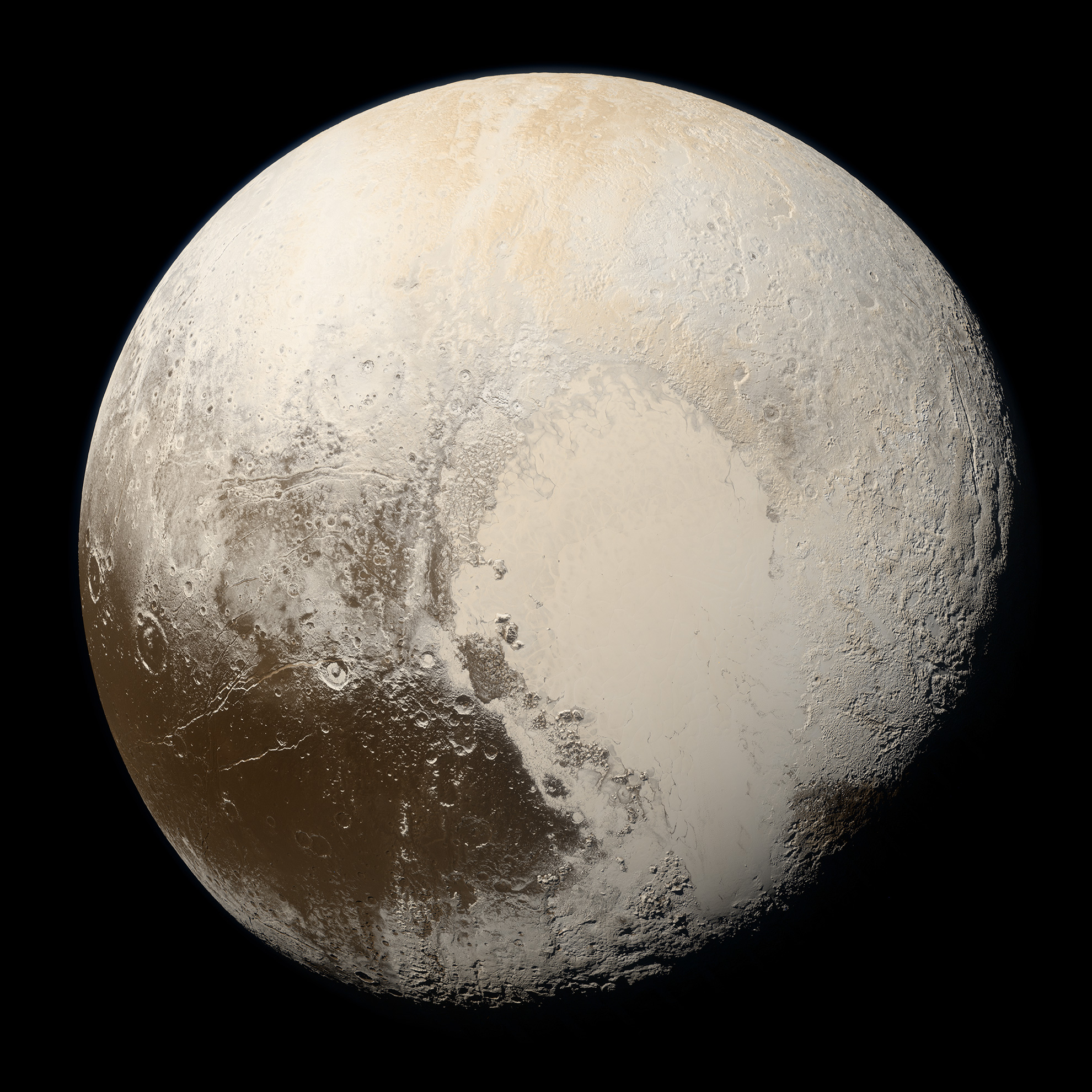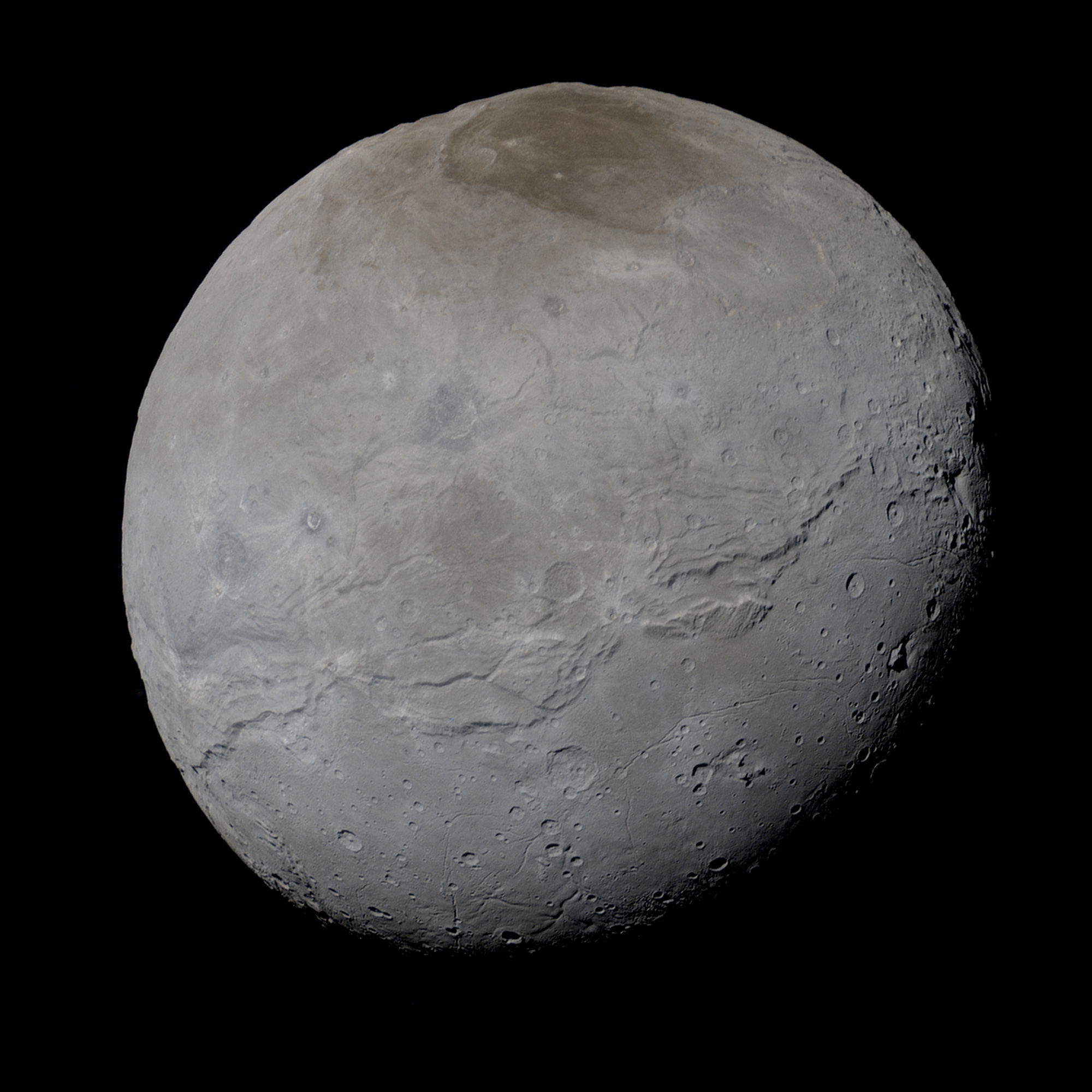Hawking Radiation
Member
NASA’s New Horizons spacecraft achieved a major milestone on Saturday, April 17, when it reached a distance of 50 AU (astronomical units, with one AU equal to the average Earth-Sun distance or 93 million miles or 150 million kilometers), meaning it is now 50 times as far from the Sun than the Earth.
That puts the probe at nearly five billion miles (7.5 billion kilometers) from our planet.
Launched in January 2006, the spacecraft, which crossed the 50 AU threshold at 8:42 a.m. EDT (12:42 UTC) Saturday, is just the fifth to reach this milestone. Like its predecessors Pioneers 10 and 11 and Voyagers 1 and 2, New Horizons, now deep within the Kuiper Belt, is on a trajectory to eventually leave the solar system.
To commemorate the occasion, New Horizons‘ Long Range Reconnaissance Imager (LORRI) took a picture of the starfield in the direction where Voyager 1, the most distant probe launched from Earth, is traveling. Voyager 1, now 152 AU from the Sun, is too small and too distant to appear in the image, which includes stars and several remote galaxies.
“That’s a hauntingly beautiful image to me,” mission principal investigator Alan Stern of the Southwest Research Institute (SwRI) in Boulder, Colorado, said of the photo. “Looking back at the flight of New Horizons from Earth to 50 AU almost seems in some way like a dream. Flying a spacecraft across our entire solar system to explore Pluto and the Kuiper Belt had never been done before New Horizons.”

LORRI image of the starfield in the direction Voyager 1 is traveling. The yellow circle shows Voyager 1’s location. Photo Credit: NASA/Johns Hopkins APL/Southwest Research Institute
Additionally, he noted, “Never before has a spacecraft in the Kuiper Belt photographed the location of an even more distant spacecraft, now in interstellar space. Although Voyager 1 is too faint to be seen directly in the image, its location is known precisely due to NASA’s radio tracking.”
Traveling at the universal speed of light, radio signals to and from New Horizons now take seven hours each way.
“It’s hard to imagine something so far away. One thing that makes this distance tangible is how long it takes for us on Earth to confirm that the spacecraft received our instructions. This went from almost instantaneous to now being on the order of 14 hours. It makes the extreme distance real,” emphasized mission operations manager Alice Bowman of the Johns Hopkins University Applied Physics Laboratory (JHUAPL) in Laurel, Maryland.
Following its launch on an Atlas V rocket, New Horizons began its journey traveling 36,400 miles (58,500 kilometers) per hour. It conducted a flyby of Jupiter just 13 months later and received a gravity assist from the giant planet before traversing the solar system in a nine-and-a-half-year journey to Pluto.
After its historic Pluto flyby in July 2015, the spacecraft went on to a close encounter with Kuiper Belt Object Arrokoth, the most distant object ever visited by any probe, on New Year’s Day 2019.
Mission scientists are now using the National Astronomical Observatory of Japan‘s (NAOJ) Subaru Telescope in Hawaii and other ground-based observatories to search for a third flyby target. From its vantage point in the Kuiper Belt, New Horizons is studying the space environment and solar wind.
This coming summer, mission scientists will improve the spacecraft’s capabilities by sending it a software upgrade.
Pioneer 10, launched in 1972, sent its last transmission to Earth in 2003. Its partner, Pioneer 11, launched in 1973, sent its final transmission back in 1995.
Launched in 1977, Voyager 1 and Voyager 2 are still transmitting back to Earth although both will eventually run out of power. New Horizons is expected to have sufficient power to continue operating through the late 2030s or possibly even 2040.
Amazing achievement and the image of Voyager 1 location some 150 AU from the Sun and deep into Interstellar space is just mind blowing.
That puts the probe at nearly five billion miles (7.5 billion kilometers) from our planet.
Launched in January 2006, the spacecraft, which crossed the 50 AU threshold at 8:42 a.m. EDT (12:42 UTC) Saturday, is just the fifth to reach this milestone. Like its predecessors Pioneers 10 and 11 and Voyagers 1 and 2, New Horizons, now deep within the Kuiper Belt, is on a trajectory to eventually leave the solar system.
To commemorate the occasion, New Horizons‘ Long Range Reconnaissance Imager (LORRI) took a picture of the starfield in the direction where Voyager 1, the most distant probe launched from Earth, is traveling. Voyager 1, now 152 AU from the Sun, is too small and too distant to appear in the image, which includes stars and several remote galaxies.
“That’s a hauntingly beautiful image to me,” mission principal investigator Alan Stern of the Southwest Research Institute (SwRI) in Boulder, Colorado, said of the photo. “Looking back at the flight of New Horizons from Earth to 50 AU almost seems in some way like a dream. Flying a spacecraft across our entire solar system to explore Pluto and the Kuiper Belt had never been done before New Horizons.”

LORRI image of the starfield in the direction Voyager 1 is traveling. The yellow circle shows Voyager 1’s location. Photo Credit: NASA/Johns Hopkins APL/Southwest Research Institute
Additionally, he noted, “Never before has a spacecraft in the Kuiper Belt photographed the location of an even more distant spacecraft, now in interstellar space. Although Voyager 1 is too faint to be seen directly in the image, its location is known precisely due to NASA’s radio tracking.”
Traveling at the universal speed of light, radio signals to and from New Horizons now take seven hours each way.
“It’s hard to imagine something so far away. One thing that makes this distance tangible is how long it takes for us on Earth to confirm that the spacecraft received our instructions. This went from almost instantaneous to now being on the order of 14 hours. It makes the extreme distance real,” emphasized mission operations manager Alice Bowman of the Johns Hopkins University Applied Physics Laboratory (JHUAPL) in Laurel, Maryland.
Following its launch on an Atlas V rocket, New Horizons began its journey traveling 36,400 miles (58,500 kilometers) per hour. It conducted a flyby of Jupiter just 13 months later and received a gravity assist from the giant planet before traversing the solar system in a nine-and-a-half-year journey to Pluto.
After its historic Pluto flyby in July 2015, the spacecraft went on to a close encounter with Kuiper Belt Object Arrokoth, the most distant object ever visited by any probe, on New Year’s Day 2019.
Mission scientists are now using the National Astronomical Observatory of Japan‘s (NAOJ) Subaru Telescope in Hawaii and other ground-based observatories to search for a third flyby target. From its vantage point in the Kuiper Belt, New Horizons is studying the space environment and solar wind.
This coming summer, mission scientists will improve the spacecraft’s capabilities by sending it a software upgrade.
Pioneer 10, launched in 1972, sent its last transmission to Earth in 2003. Its partner, Pioneer 11, launched in 1973, sent its final transmission back in 1995.
Launched in 1977, Voyager 1 and Voyager 2 are still transmitting back to Earth although both will eventually run out of power. New Horizons is expected to have sufficient power to continue operating through the late 2030s or possibly even 2040.
Amazing achievement and the image of Voyager 1 location some 150 AU from the Sun and deep into Interstellar space is just mind blowing.














